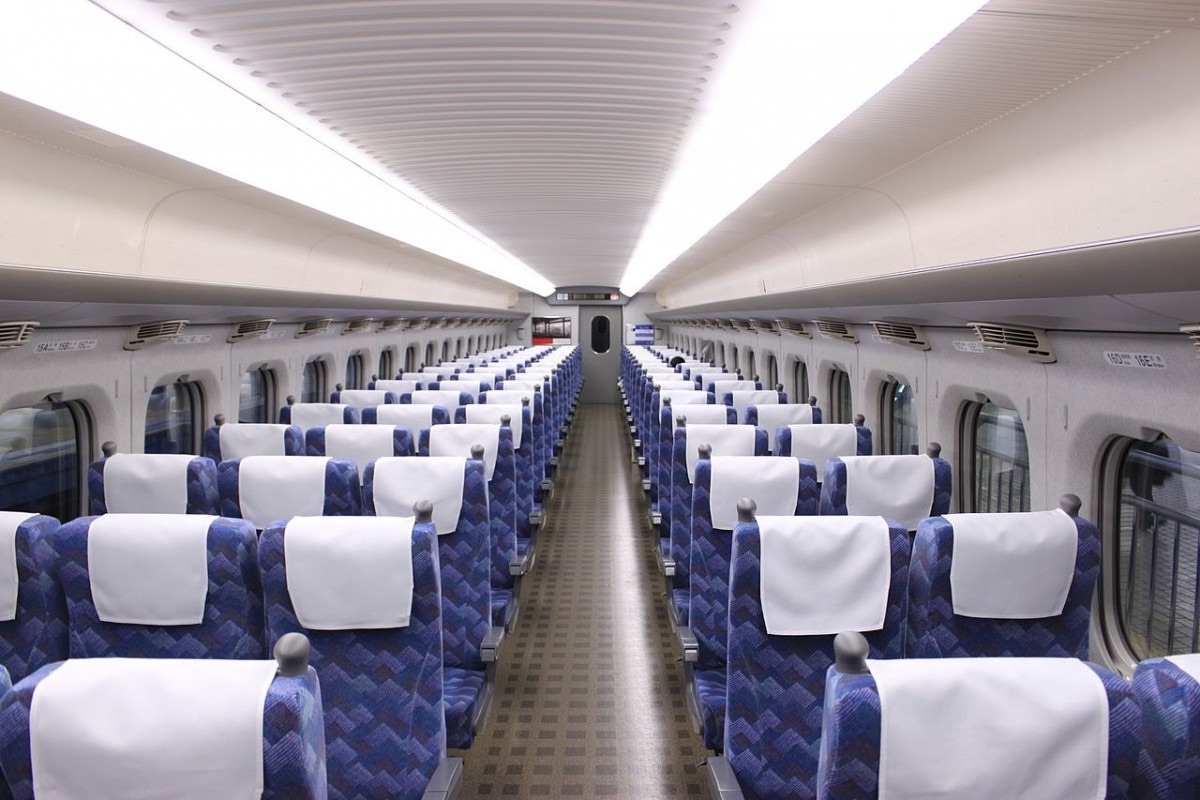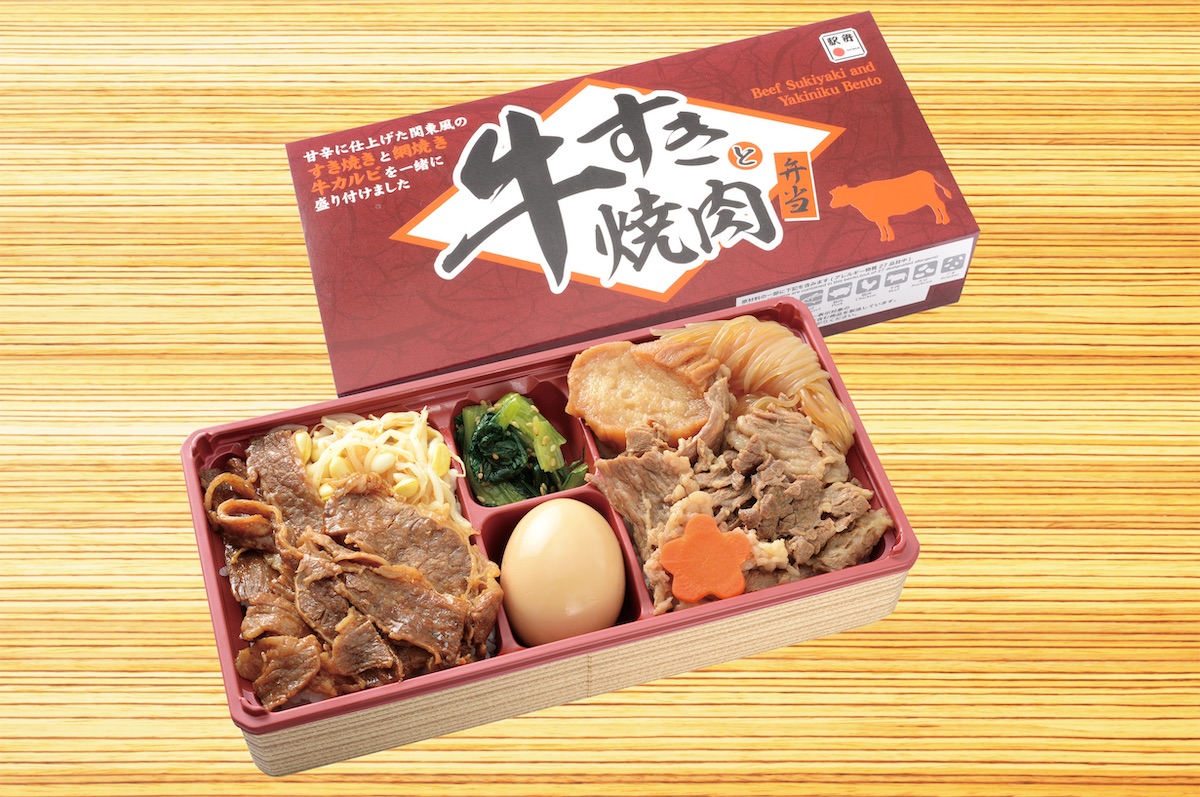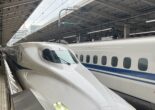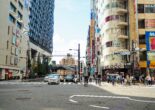A detailed explanation on purchasing a Shinkansen ticket. I will also give some helpful information on what to watch out for when purchasing and utilizing the Shinkansen.

Whether you are a foreigner travelling all across Japan or a resident residing in Japan, the Shinkansen (新幹線) is one of the most convenient transportation for everyone and anyone to use. Running up to 320km/h, this fast transportation system is designed to link the capital of Japan’s major cities in just a couple of hours. It offers comfortable seats, a very comfortable smooth quiet ride, and an extraordinary view out your window.
There are four ways of buying Shinkansen Tickets
1. Online
You can easily purchase your tickets from existing Japanese websites such as Japan Rail or Voyagin. Voyagin is a helpful website that allows you to purchase your tickets with different currencies, and explains in great details on how to read your shinkansen tickets, cancellation policies, step by step process, etc. This website is highly recommended for foreigners since Japanese websites usually do not have English translation and can get very confusing.
2. Ticket Counter
You can easily buy your tickets at the train stations. Any JR ticket counter or window can sell you them and in larger stations like Tokyo, they have ticket offices dedicated to purchasing just shinkansen tickets.
Just a reminder, on holidays it can get very crowded and lines can get very long, so I recommend going to the ticket counter a lot earlier than your departure time.
Ticket counters are a convenient way to not only purchase your tickets, but staff will assist you on specific platforms and other additional information as you can easily get lost and confused in the maze of Japanese train stations.
Payment options including cash and credit cards are accepted throughout most ticket counters.
In order to purchase a shinkansen ticket, the following information is necessary:
- No. of travellers
- Date of travel
- Departure station
- Ordinary or Green Car
- Reserved or non-reserved Seat
For a seat reservation, the train name and the train number or departure time is needed.
3. Ticket Machine
Another convenient way to purchase your ticket is simply through the ticket machine. These machines offer services in Japanese, English, Korean, and Chinese and are self-explanatory. Just follow the directions, tap the specifics and purchase.
You can find them either inside the shinkansen ticket office or right next door by the ticket gates.
Note: You can only pay in cash!
4. Kinken Ticket Shop
金券ショップ is a discount ticket shop which specializes in buying and reselling items of values such a train tickets, jewelry, concert tickets, stamps, etc.
This is not well known to most foreigners and even Japanese folks, but is usually located outside the station and tickets are usually offered at 90-97% of the original value. Usually, you can save around 300 to 1000 yen off the regular price.
Things to consider when purchasing Shinkansen Tickets
Seats and Classes
Most Shinkansens include seats in two classes that are found in separate cars.
Ordinary Seats: These seats are the regular seats that offer adequate foot space, are generally comfortable and usually come in rows of 3+2 seats.
Green Cars: These seats are somewhat like the business class on airplanes. They offer larger, comfortable seats. Usually arranged in 2+2 seats, they tend to be less crowded and very spacious.
Gran Class: These seats are available on new train sets along the Tohoku Shinkansen, Hokuriku Shinkansen, Joetsu Shinkansen and Hokkaido Shinkansen. Comparable to first class airplanes, these seats are much more spacious and comfortable and are in rows of 2+1 seats.
Reserved and Non-Reserved Cars

Most shinkansens offers both non-reserved seats (自由席) and reserved seats (指定席) in separate cars. You can make reservations in advance when purchasing your tickets, but a fee applies. Seat reservations allow you to secure a specific seat without having to look for random available seats. They can be made one month prior to the travelling date from 10:00am or until shortly before departure time. You can make your reservations through the ticket offices, ticket machines and online. All seats in the Green Car are reserved and there are bilingual signs to indicate whether the specific car is reserved or not.
Fees That Make up a Shinkansen Ticket
After purchasing your shinkansen ticket, you will typically receive two pieces of tickets. One is a base fare ticket and the other is a supplement ticket. In some cases, these tickets are combined in a single ticket, but if multiple trains are involved, more than two tickets may be issued.
Base Fare or 乗車券: This is the fare from destination A to B.
Shinkansen Supplement or 特急券: aka limited express fee, this supplement fee is for USING the shinkansen train as opposed to the local trains. Fees increase according to the distance travelled.
Seat Reservation Fee : Depending on the season, seat reservation fees can range from 320yen, 520yen, and 720yen. Additional supplement fee of around 100yen to 620yen is applied when reserving seats on Nozomi, Mizuho. Hayabusa, and Komachi.
Amenities and Services

Some shinkansens come with small food carts where you may purchase some drinks, snacks and bento (boxed lunches). They periodically pass along the aisle offering their services.
There are signs at the front of each car indicating the next stop and announcements are multilingual (Japanese, English, Korean and Chinese).
With the exception of older shinkansens, most come with free WI-Fi available on board. Depending on the company, the networks are known as Shinkansen Free Wi-Fi, JR-EAST FREE Wi-Fi and JR-WEST FREE Wi-Fi.
All shinkansens have bathrooms that are sometimes separated by gender. These toilets are Westerm types (with the exception of older trains). Newer ones usually provide spacious toilets for wheelchair users and have sinks outside with large mirrors.
Smoking is prohibited on most shinkansens. Prominent exceptions are the Tokaido Shinkansen and some trains along the Sanyo Shinkansen where small smoking rooms are provided and well ventilated.
Each traveller is allowed to bring up to two pieces of luggage (not including small bags) weighing no more than 30kg and not measuring more than 250cm (width, height and depth).
Shinkansen trains are equipped with relatively spacious overhead shelves and can store small to medium sized bags and suitcases. Furthermore, there is space for two or three large suitcases behind the last rows of seats in each car.
On May 20, 2020 a new regulation for oversized luggages came into effect along the Tokaido, Sanyo and Kyushu Shinkansen. Passengers whose height, width and depth add up to more than 160cm, are now required to make a seat reservation in the last two rows of seats.
It is also not possible to bring oversized luggages into non-reserved cars. Passengers who do not have reservations for their oversized luggages will be asked to move their luggages to a specified space by the conductor and pay an additional fee of 1000yen.
Shinkansen Manners to Consider
- Line up accordingly on the platform before boarding
- Do not block the aisle with your luggages
- Keep voices relatively low when having a conversation
- When reclining your seat, keep the person behind you into consideration
- Set your mobile phones to silent mode
- Only talk on your phones on deck areas between cars
- Do not leave your garbage behind. Either dispose of it in the garbage bin or take it with you and dispose it at the train stations
- Do no allow children to run up and down the aisle



